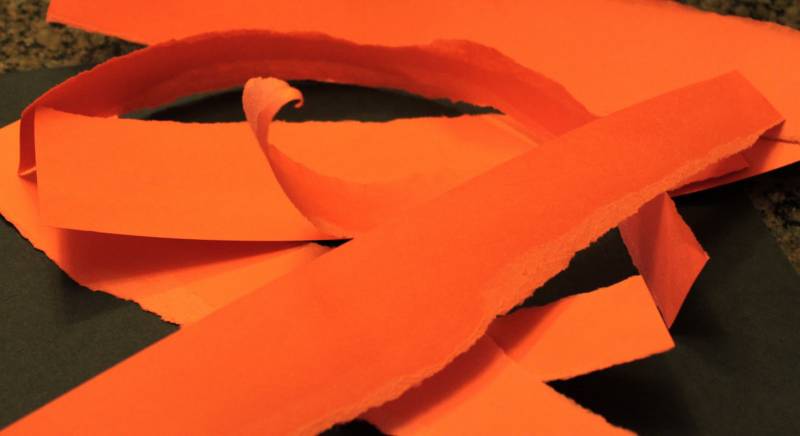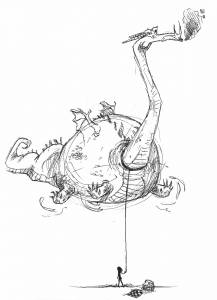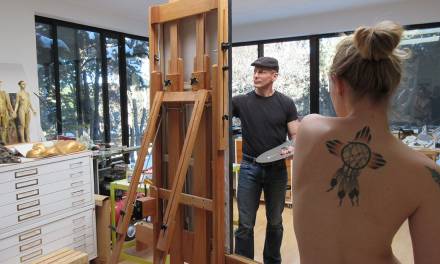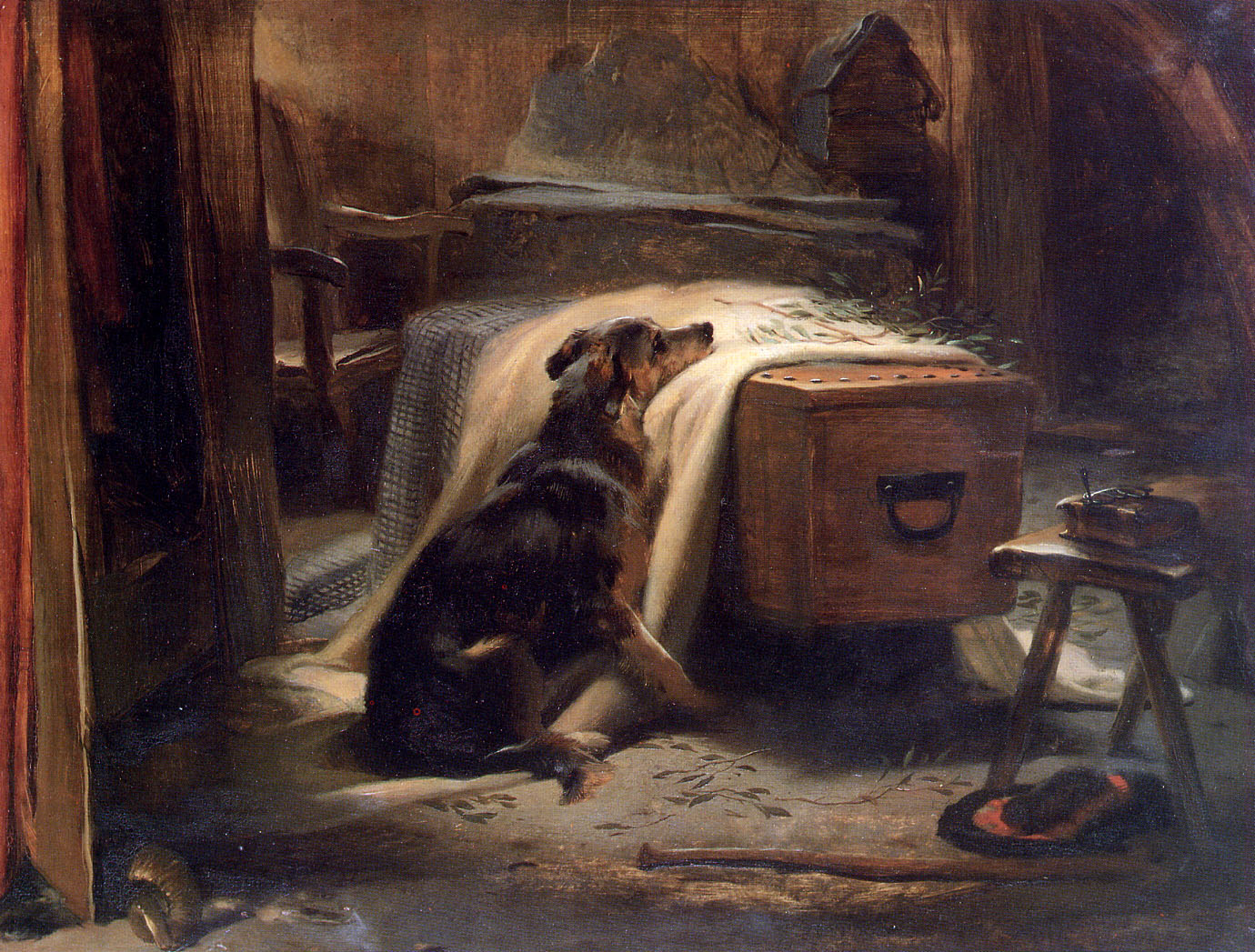It seems I have a running theme going on through my posts, but I’m going to go with it for the time being, hoping that I don’t cause you to doze off mid-paragraph… Unless, of course, you’ve been up all hours of the night working on some awesome art project and are in desperate need of sleep, in which case, I will gladly oblige and assist you in sending your brain into article-induced narcolepsy.
I’ve been overshadowed by the concept of creativity as of late. Perhaps it is because I’ve found myself in a rut, or at a road block or in a stale mate, or what have you. Don’t get me wrong, I have plenty of ideas floating around upstairs, they just don’t seem to want to come out.
As I was contemplating why this might be, I was thrown back to a handful of classes and presentations I offered a couple of years ago. My students were young—second or third grade or thereabouts, to be exact—so we’re talking 7 to 9 year olds. Too young to think sorely of the world and it’s possibilities and yet old enough to grasp the concept of them. I’ll share some of the experiences I had with these kids.
Experience #1:
This experience included one of my own children. Being the dutifully involved mom that I was, I jumped on the chance to take part as an assistant in the regular art classes the elementary school presented and sometimes also offered mini courses of my own. I did my best to spread my focus over the multitude of children, but as might be expected, tended to hover over my own daughter during my assistant time. For the most part this was rather “hands-off” for me as I didn’t want to interfere with the creative process that was individual to each child—and it seemed to work well. However, during one of these art projects, I felt the need to step in. Not in the way you might think, though.
For the project the children were working on, they had been asked to tear up bits of colored paper by hand and glue them to another piece of paper to create a portrait. This was after the style of an artist whose name I didn’t necessarily see the need to log away for later recollection. The children were supposed to replicate the artist’s work. I didn’t have a problem with that per se—I can see the value in copy work for beginners. What I took issue with was the teacher’s approach. My daughter was having a swell time, thrashing some paper to shreds while carefully exacting strips out of others so as to get the precise piece. As she neared finishing, the teacher came around and informed her that she needed to remove many of the pieces or start the artwork over again. I didn’t get involved immediately. I wanted to see how it would play out. But I could see that my daughter was crushed. She was so pleased with her work that the excitement beamed out of her face—at least up until the moment the teacher corrected her. Apparently, the pieces that needed removing each included an “edge” of the paper it was torn from, rather than being entirely torn on every side, which was incorrect. Did this diminish the quality of her work or stray from the purpose of the project? No. What it did do, instead, was instill in her that something was wrong with her creative approach and because of that, she balked. She refused to move forward any further on it and, in fact, insisted on throwing it away when the class was over. I didn’t let that happen and alternatively let her work on the piece at home while giving her support and guidance on how she could finish the art to the best of her abilities and vision.
Now, I’m not saying that when creating art corrections are inappropriate. On the contrary, I would think it disingenuous not to provide direction and critiques as needed to increase technical skill. What I have a problem with is that where skill is secondary (aka tearing up paper by hand—in the hands of a 7 year old, no less), creative license should not be inhibited. At worst, it should be allowed, and at best, finding alternate solutions to a problem placed before you should be lauded and encouraged. And to be honest, I’d have to admit that I much preferred the variation and aesthetic my daughter brought to her version of the portrait over the artist’s original, even with all of it’s (well-thought-out) hard edges.
This led to my second experience:
Experience #2:
Not long after the aforementioned art faux-pas, I was asked to give a presentation in the same class, with the same set of kids. I recognize perhaps my blunder in going about doing it this way, but before the presentation began, I unveiled a few pieces of my artwork behind me, then proceeded to share with them “what I do for a job”. Near the end of the presentation and after lots of great discussion between myself and these adorable human tadpoles, I asked how many of them liked art. All of their hands shot up. They liked art—my art specifically—and that temporarily bloated my ego a bit. Then I asked how many of them thought that they could grow up to be an artist or creative.
I got the shock of a lifetime.
Not one single hand went up.
Mind you, these were 7 and 8 year olds. I would have expected most, if not ALL of their hands to raise. Why? because kids are curious, they’re naturally creative; and not only that, but they don’t tend to fear much when it comes to creative subjects. Hesitate about the languages, maybe; math, most likely—but art? Okay, so maybe I was at fault by throwing hugely detailed 5 foot paintings in front of them. That could be considered a little intimidating. I was a 7 year-old once, and I think I might have felt that way if I was in a similar situation. But I think there was more to it than that.
Recently, I’ve spent several hours watching TED talks and presentations given by Sir Ken Robinson and there were some things he mentioned that I thought were quite interesting. One of the things he said was, “We don’t grow into creativity—we grow out of it. Or [more specifically], we are educated out of it.”
As I thought about what had happened in Experience #1, it became clear to me that the education system is built, as Robinson suggested, on a “linear” mode of learning. To not know something is somehow to be “at fault” and that we stigmatize mistakes to such a negative degree that we’re raising entire generations that are frightened of making them. The hierarchy of school topics, around the world, cater to this mentality. At the top (and absolutely important, I believe) is mathematics, followed by languages, and so on… and at the very bottom of the totem pole are the creative arts, which appear to be the most difficult to place in terms of “rights” and “wrongs”. They fall into a somewhat gray area that is difficult to place in a box, slap a label on and run placement tests for. They’re deemed less “useful” because they’re more difficult to categorize. (Don’t yell at me, that’s not how I feel about it).
Sir Ken Robinson doesn’t suggest that making mistakes is the same thing as being creative.
What he was getting at was this: To be creative, you have to be prepared to be wrong. And if you’re not prepared to be wrong on occasion, you’ll never come up with anything original. You have to be willing to take risks. Just think of the Thomas Edisons and Bachs and Beethovens. We’ve all heard the story of how many times Edison failed at creating a light bulb before he finally got it to work. But we hear less often about how many hundreds of pieces of music Bach and Beethoven wrote as compared to the handful that are now considered “masterpieces”. There never was and never will be a formula for the perfect creative process—at least in this mortal state, as I see it. The ability to turn mistakes into successes is a necessity then for anyone wishing to be more than status quo.
There’s also a difference between imagination and creativity. One can have all kinds of fantastic ideas rolling around inside his head, but if all he does is lie in bed all day living in his own imaginary world, does that make him creative? I don’t believe so. If it’s not squashed out of us at an early age by the errant thinking that all that’s valuable in this world is to stand in line and be carbon copies of each other, everyone has an imagination. I’ll go further than that, which is that everyone also has the capacity to be creative. We’re born with this ability. Just take a newly walking toddler, for example. My goodness, how many ways have we had to come up with to keep cupboards shut, yards cleaned up of dog excrement and knives kept carefully tucked away so that these inquisitive little creatures don’t break every glass bowl, do finger painting all in the color brown, or scale walls to reach the countertop knife block in an attempt at being the next David Adamovich? Creativity is then no longer a noun or adjective but a verb. To be creative is to do. To do something with the imagination that resides within us. We start out as imaginative, creative doers. So why do we teach it out of our kids, and sometimes out of ourselves?
Coming full-circle, I think this is where I find myself stuck on occasion. The imagination is still there. I haven’t let anyone steal that from me or convince me that it’s “useless”. I also don’t think I’m truly afraid of making mistakes. I’ve made plenty of those and many of them I count as blessings that have launched my learning and abilities forward. Where I think I get halted is in the formulaic regimen that seems to overtake me that has in it embedded those two horrible stumbling blocks. The world loves their beeping alarm clocks (okay, maybe not, but we’re still slaves to them anyway), their morning coffee, the eight hour work day, coming to a close every Friday to have their weekend break, all to come crashing back with a figurative hangover every Monday to start the cycle over again. So, I’ve decided—and I have to remind myself often to do this often so I don’t fall back into the same issues—to take some chances, make some mistakes and choose actively to stumble toward progression and creativity.
If you’d like to watch the full video of Sir Ken Robinson’s TED talk, it can be found here. I think you’ll find him both entertaining and enlightening.











I love this post, thanks for sharing. I think it’s wonderful for accomplished artists to share in a classroom setting such as you did. To encourage them you could show them any art that you did as a child to show them the progress you’ve made.
Erich, thanks! I love working with kids as much as I do for the reason that they are so freely creative. To watch how they work out their imaginations with their hands in art, their bodies in dance, and their stories in words is fascinating. It’s crazy, but sometimes I wish I could jump back into that stage simply to free myself from the restraints I put on myself, opening up all the ideas and possibilities that are inside just waiting to get out. I actually did share some of my early childhood art a couple of times during some of my presentations. It was great to watch the kids’ faces and hear them laugh at how rudimentary it all was in comparison. Good stuff. 🙂
Thank you love! 3